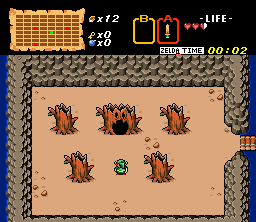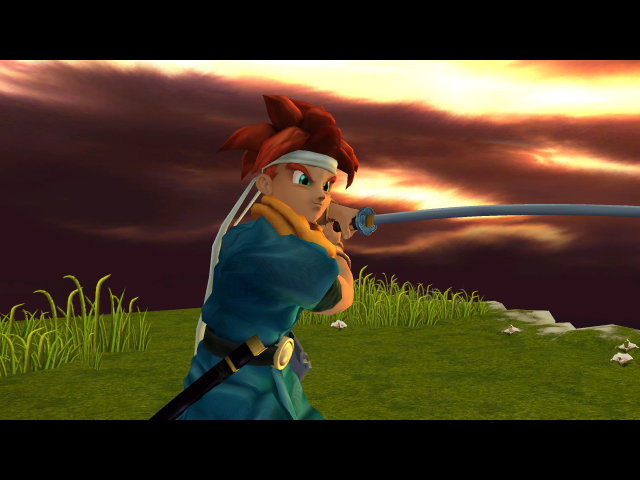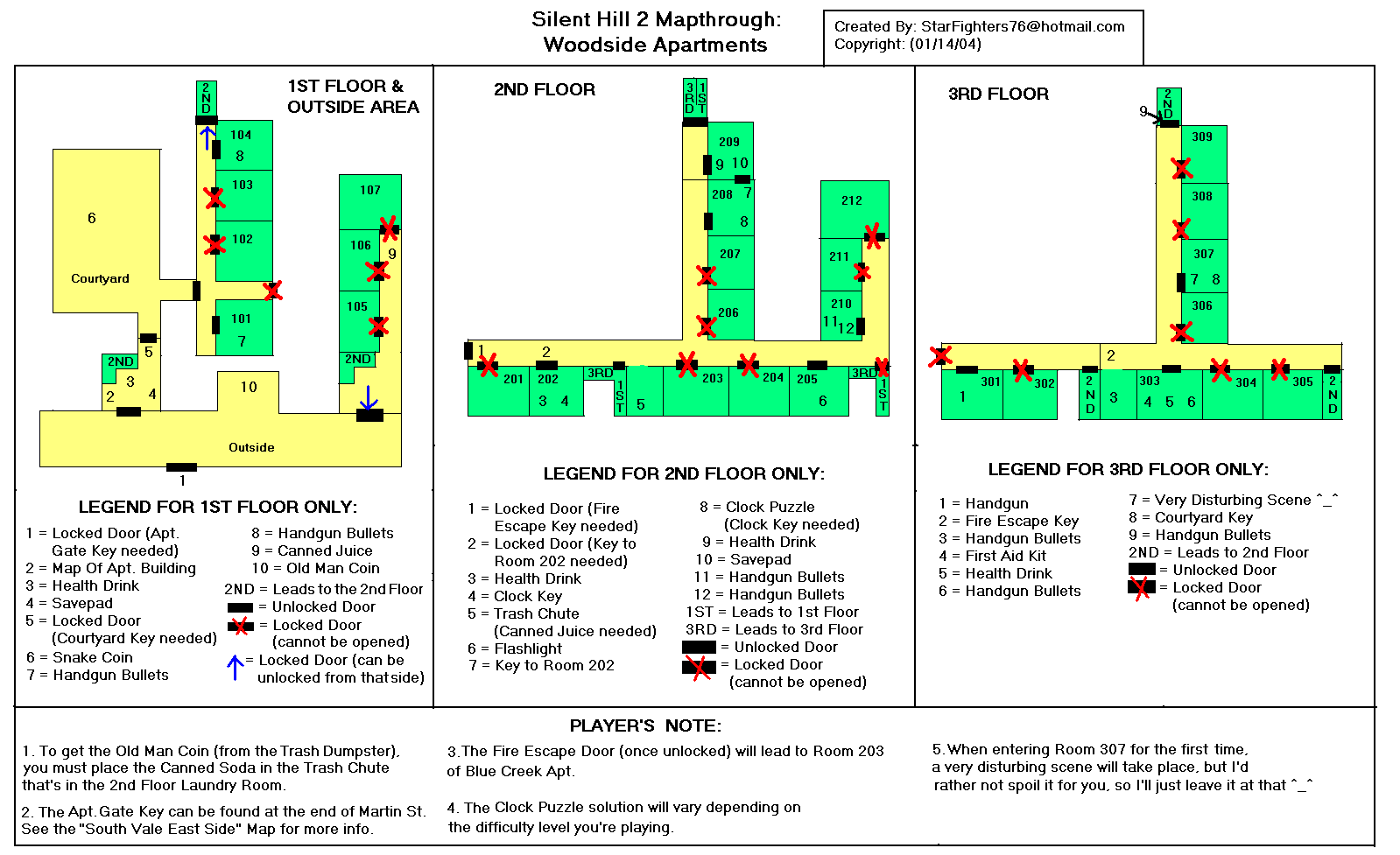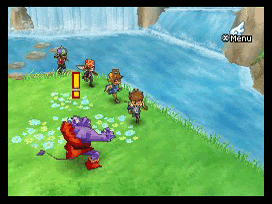There are a number of things in the
game industry that confuse me to no end.
Perhaps at the top of the list is the Mother series in Japan. It is a quirky 16-bit RPG series that has
gained a huge following in the U.S. While I have yet to play it, I know a great
deal about the series. While it did see
a limited release in the west under the title Earthbound, it seems odd that
games like Infamous are getting a re-release collector’s edition less than four
years after its initial release, but this quirky series is left by the
wayside. The fans are there and have
made themselves known to Nintendo, so why?
 |
| 17 years and Nintendo still remains silent on the Mother/Earthbound series |
Nintendo claims that there might be
legal repercussions based on musical ques and names as the reason for the game
Mother 2 or Earthbound not being re-released.
However, this doesn’t stop Mother 1 or Mother 3 from being released as
part of a compilation set or on the Virtual Console on the Wii or 3DS. Yet, Nintendo continues to be silent on this
series. One of the arguments for this is
that these games are text heavy RPGs that would require too much time to
translate and adapt to the U.S. And that is a fair complaint. I understand that a lot of great RPGs and
other uniquely Japanese games weren’t released because of translation
issues. Translating the Japanese text
and mannerisms to make sense in English would cost a great deal and take a huge
amount of time. However…why doesn’t
Nintendo use the fan translations?
 |
| This is the only way to play Mother 3 in English...so why doesn't Nintendo just reach out to the fans for the translation and schedule a release of the game stateside? |
Here is the meat of our subject
today. Fan power. Gamers who love games will go to all manner
of extremes for them. Fan fiction, fan
art, fan translations, even fan mods and fan sequels. These extensions of popular games are
uniquely tailored to their audience and will thusly appeal to them, more often
than not. The biggest hurdle to these
fan creations being released for profit is the threat of legal action from the
company that owns rights to the original.
However, what if the game companies, instead of threatening legal action
or trying to shut down or ignore these fan communities and fan creations, tried
to make use of them? Market them
legitimately? In fact, mods, or fan
created additions, to PC games are how many gamers get jobs in the industry. Showing they understand the tools needed to
make games by adding on to games they already know and love.
And some of these fan creations
show real time, effort, and dedication.
Many games never reached the shores of the U.S.
because of time, money, or apparent lack of interest. However, fans who had imported the games
loved them so much that they wanted to share them with others and took to
translating them. Many fan translation
or localization groups have put forth work purely out of their own interest
with no hope of profit. This is how the
Mother 3, Bahamut Lagoon, and the original Final Fantasy 2, 3, and 5
translations were released. However,
fans can go even further. One intrepid
group of young hackers put games from the Satellaview, a Japanese only
satellite gaming service, online for all to enjoy, with the caveat that if they
were contacted by Nintendo or other companies and asked to remove them, they
would. They also stated that if the
games were released stateside, they would take down their website. What makes this remarkable, however, is that
not only was the Satellaview released only in Japan,
but many of the games for it had holes in the code which were meant to be
filled by the satellite broadcasts. So,
these hackers not only translated the games, but filled the holes in their
code, retooled their controls, added in the old music from the broadcast, and
released it, for free, so that others could enjoy it.
 |
| Zelda on the Satellaview, in English, available to the masses, all thanks to fans |
No matter what anyone says about
copyright violation or piracy, one has to admire the passion involved in
projects like this, where dozens of people spend their own time, without pay,
to share the games they love with others.
However, I personally believe that this is an untapped resource for game
companies the world over. Rather than
re-releasing some games as many as five times, Square-Enix, why not look at some
of your older properties that have gained a cult following but were never
released in the west? If the fans have
done their work right, you could offer to buy their translation from them and
release your old game to the west, but at full price on a new platform. It would require some quality control and
play testing, but the lion’s share of work necessary to make it viable for a
western release would already be done.
However, even given such a unique opportunity to work with fans, most
game companies do not cooperate. In
fact, some go out of their way to destroy the hard work of fans.
Most fans respect the wishes of the
game companies and agree to shut down their work if they are asked. And some companies, like Nintendo, agree to
look the other way so that the fans can be fans. However, many game companies take one look at
a promising project and immediately shoot it down. For example, a 3D remake of the critically
acclaimed Chrono Trigger was being made by fans and the company who owned the
rights to it, Square-Enix, threatened them with litigation if they did not
cease and desist. This effectively
killed the project. However, think for
just a moment. Square-Enix has a
propensity for re-releasing their popular titles. Recently, Chrono Trigger was just re-released
for the Nintendo DS. So…why not simply
work with the fans instead of threatening legal action on them? Buy them off and have them continue their
work. Square recently released a 3D
remake of Final Fantasy 3 done in house, a process which had to be unbelievably
expensive. So, if a group of gamers who
loved the game are working to create the exact same thing, but are doing it for
free…then buy them off and have them continue their work. Don’t simply waste all their time and effort
by threatening legal action.
 |
| This is what Chrono Trigger would look like in 3d...if it hadn't been shut down. Yeah...thanks for that, Square-Enix |
Fans of video games, like fans of
almost any property, can have an unbelievable drive, love for their medium, and
a power to change it. However, too
often, game companies see them as the problem, not the solution. In my opinion, game companies have forgotten
that fans are the force which keeps them profitable. Without the fans, they are nothing. Yet, every day the gaming world is outraged
at some new form of on disc DLC or DRM which locks players out of games they
paid for, or online passes. Game
companies treat gamers more like thieves or free money than lifelong
friends. And that is a major
problem. Fans will continue to love
games, regardless of the companies, but if companies don’t understand and
respect the power of fans it will hurt them in the long run. Before being acquired and merged with
Activision, Blizzard, for example, knew how to treat fans. After releasing Starcraft, Blizzard
encouraged its piracy to a degree. Burn
a copy, share it with friends, and then they might go buy a copy themselves, or
at least share the popularity of the game with their own friends, who might go
buy a copy. While this kind of policy
changed after their merger, this should prove that fans have power. And fans want to be friends to game
companies, even if the reverse is not true.
 |
| Blizzard used to just spread the love. Then Activision happened. And now we get online passes. Progress...? |
And it is curiously true that many
times, fans orchestrate the biggest changes in the gaming world. Gamers modding Half-Life created the
incredibly popular Counter-Strike mod that has become a mainstay of Valve’s and
which has seen several sequels and spin offs.
Importers who picked up Demon’s Souls, even though it wasn’t planned for
a western release showed Japanese developer From Software that there actually
was a market for their game in the west, convincing them to release it and its
sequel, Dark Souls, in the west. The
Defense of The Ancients mod in Warcraft 3 became so popular that it even
spawned an entirely new genre of game, the massively multiplayer online arena
fighter, which has one sequel in the works and at least a dozen
competitors. The highly publicized
Operation Rainfall brought awareness to the titles Xenoblade Chronicles, The
Last Story, and Pandora’s Tower, and helped them get out of Japan,
into Europe, and eventually to U.S.
shores. Fans have an incredible gift for
changing the industry and game companies need to start respecting and making
use of their fans, like partners, rather than treating them like thieves trying
to take a piece of their pie.
 |
| This funny little fan mod spawned an entire sub genre of MMO games |
If game companies would open
themselves up to fan assistance they would not only find strong potential
employees, but might actually get to release some games they would not be able
to otherwise. For example, Vanillaware
recently had to cancel the western release of a game called Grand Knights
History, due to “lack of resources to localize.” However, what if fans stepped in and agreed
to work with the designers to get this project done? Some wouldn’t even ask for payment, so long
as the game was released. Fans can be a
powerful boon for small companies that need assistance and can be loyal
followers for stronger companies who already have their footing, provided they
don’t alienate their fans.
 |
| Yeah, this ain't making it stateside anytime soon |
Perhaps the biggest issues
preventing gamers and companies from coming together are legal concerns and
profit concerns. This is frustrating,
because gamers are more than willing to lend their hand to help make something
they want a reality, but game companies have their own interests to protect. Legal concerns, such as the rights of the
fans making the game vs. the company would be a problem and if any materials or
resources, such as the game engine, levels, or characters, were used in other
projects by the fans, there might also be a need for litigation. Game companies are very protective of their
assets, most of the time. And there
would also be the issue of compensating the fans for their work and whether or
not their work turns a profit for the company.
Game companies, especially the big ones, like Square-Enix and Electronic
Arts, have to protect not only their own profit margins, but cater to their
investors and shareholders, which would make any project with fan assistance a
hard sell, as investors are naturally skeptical of people not on their payroll
and who they cannot properly penalize should something go wrong.
 |
| Pretty much how game companies feel if a product bombs...and we want them to approve fan games? |
I really do
believe that with the right business model, any number of game companies could
use work done by the fans and turn a profit, for both themselves and those who
worked on it. NES Reproductions, for example, has managed to make a fair profit
by releasing fan translated NES games for sale directly to gamers. They can do this because the copyright on the
games and the technology is usually long expired, since the NES and Famicom
were released almost thirty years ago.
This kind of business model takes the work of the fans and turns it into
something that can be bought and sold for a profit. If an independent party can do it with
properties that have passed their expiration date, imagine what a game company
still holding onto the rights for almost a dozen retro titles never released in
the west could do. I have a vision that
I’d like others to indulge in for just a moment. Say, instead of making reproduction cartridges
with fan translated or altered games on them, game companies created a digital
service, like Steam? Then, took old
games like the Mother series, Bahamut Lagoon, Sweet Home, or any number of
other titles they still owned and released them at a fair price, like 10-20
dollars? If they used the fan
translations and gave a cut of their profits to the translators, that’s a tidy
amount they had to do basically nothing to make. Granted, this kind of business model would
require a digital distribution service and would take time to set up, but it
would go a long way in discouraging emulation and piracy. As it stands, emulation is the only viable
way to play English language copies of games like Mother 3 or Bahamut Lagoon
for most people. However, if the game
companies made it easier to get these games off their service, perhaps with a
sale or two and built in rewards just to sweeten the pot, emulation would
practically die out overnight. This
happened for countless Wii owners who found games they used to emulate on the
virtual console for a fair price. The Extra Credits crew have said time and again, if you provide a better service, people will use that rather than piracy.
Convenience is the key. A service
like Steam or the Wii’s virtual console caters to fans and makes it easier to
get the games they want. Emulation has a
lot of legal and computer based issues.
However, when emulation is the only option, then that is what people are
going to choose.
 |
| How many people would give their left foot for this game to be released overseas legitimately? |
Regrettably,
this kind of business model may never see the light of day. There is a lot of red tape involved in some
of these dealings, such as giving proper credit to the fan translators,
ensuring they get fair compensation, the compromise between game companies who
have had their properties tampered with and the fans who only want to bring old
favorites to the masses, and countless other problems. Most game companies don’t want to adapt to
make use of their fans. And the sad
thing is, unlike some of the other issues discussed here, they don’t really need
to adapt. Fans will continue
translating, making unofficial sequels, modding, etc. as long as it gives
themselves and other gamers joy, while companies will either tolerate them or
crack down on them so long as they feel their rights are threatened. If a company cracks down, the fans may just
make the game an original title and release it as an indie game on Steam or
some other digital service. So, while
there isn’t really a big loser if these two sides stay separate, I feel that it
is a huge missed opportunity for the developers and publishers to foster relationships
with their fans that benefit everyone.
Even if fans keep on being fans and companies keep on being companies,
imagine what they could do if they came together to work on something they
loved? We could get a third Chrono game,
translated versions of games that were never released stateside, genuine fan
feedback on changes made to try and modernize old classics…the possibilities
are limitless. Well, even if it’s never
meant to be, we can all dream, can’t we?
 |
| Dare to dream, people. Dare to dream. |








